The Samsung Galaxy Note5 and Galaxy S6 edge+ Review
by Joshua Ho on October 2, 2015 8:00 AM ESTSoftware: TouchWiz UX and Edge UX
In the case of Android, one of the perennial debates has always been the role of the OEM in regards to software experience. There are some that advocate for OEMs to do the bare minimum, only providing the necessary drivers and other bring-up work to enable a Google/AOSP experience similar to what we see on Nexus devices. On the other end of the spectrum, there are some in the industry that advocate for the use of Android as a base, with significant work on the part of the OEM to introduce their own unique user experiences like MIUI. There’s a ton of room here for personal preference, so it’s necessary to try a UI before deciding that you’re going to be okay with using it for at least the next two years.
In the interest of full disclosure, I’m not particularly enamored by “pure” AOSP experiences. In general, I find that AOSP is lacking in a lot of ways when it comes to out of the box experience. There are quick settings, but there’s no way to add or remove toggles. There isn’t a particularly good weather clock widget for the homescreen, and the Google Camera application is light on features to say the least. Basic features like a battery percentage display in the status bar are also missing. While there are people that want to run custom ROMs to personalize all of these things, for most people I think some additions are helpful.
In the case of the Galaxy Note5, we’re looking at something that tends a bit closer to a full conversion UI like MIUI. Samsung’s TouchWiz has often received a great deal of criticism, but for better or worse with the Galaxy S5 and S6 Samsung has been toning things down to be closer to Android in terms of overall design and less emphasis on the longest feature list possible. For the Note and Edge lines, Samsung continues to add new features designed to enhance the usability of the stylus and edge display, respectively.
Other than these features, the Galaxy Note5 and Galaxy S6 edge+ have effectively the same UI as what we saw with the Galaxy S6, so those interested in a deeper look at the changes in TouchWiz for everyday use should take a look at the Galaxy S6 review to learn more. For the Galaxy Note5 and Galaxy S6 edge+, the only major changes from the Galaxy S6 are mostly in the form of a new set of icons. In practice, this isn’t really a change if you use a custom theme to try and clean up the aesthetic like any of the material design themes. The vast majority of the differences are centered on the new stylus functions and edge display functions, respectively.
In the case of the stylus functions, the Galaxy Note5 is a definite step up from the Galaxy Note 4. Samsung continues to be one of the few OEMs in the mobile sector to actually take styluses seriously, and it shows with the Note5. There is the problem of damaging the phone if you insert the stylus backwards, but the actual functionality that the stylus provides is excellent.
Although not really a part of the software, the pen itself is well designed so that the tip of the stylus has enough friction so handwriting feels natural. The latency isn’t quite at the level of pencil and paper, but lines track quite closely compared to older models like the Galaxy Note 3 or 4. Even at extreme angles the stylus tracks accurately and inking occurs exactly at the tip of the stylus where it touches the display rather than where the point of the stylus nub is. The pressure sensitivity curve is definitely fine-grained, but I feel like where the lightest possible pressure starts and where the heaviest pressure ends isn’t quite right. If I lightly graze the screen with the stylus, inking doesn’t really work unless I put some downward force to compress the tip. At the high end, it feels a bit like the force needed might be a bit excessive as any normal pencil would have a broken lead if I applied as much pressure as I did with the S-Pen to get to the highest pressure level.
The software aspect of the Note5 is also very well executed for the stylus functionality. When you first take out the stylus with the display on, there’s nothing that immediately launches on the display which helps to reduce clutter. The Air Command display only opens up if you press the side button the stylus, which opens up Air Command. By default, you get shortcuts to pretty much anything you’ll ever use with the stylus, but there’s an option to add more shortcuts if you install extra applications that take advantage of the S-Pen. If you close the menu the Air Command button will remain in a translucent icon overlaid on the display, but it doesn’t react to any touches unless you use the S-Pen and can be removed by long-pressing the button with the S-Pen and dragging it to the top edge of the display. I personally ended up turning this feature off though, as I found it easier to just always press the side button to open up the stylus shortcut menu.
With the Note5, the default applications that support the S-Pen remain. You get Action Memo, S-Note, Smart Select, and Screen Write. Action Memo and S-Note are similar, but Action Memo is more of a quick notepad rather than the full-featured notebook application that is S-Note. Screen Write allows you to directly annotate a screenshot with the stylus, and Smart Select allows you to only screenshot a part of the display that is selected with the stylus.
These apps aren’t new, but they come with new features. For example, the Note5 adds the ability to use Action Memo with the screen off is and it’s quite helpful for writing things down in the moment. Scroll capture is a part of the Screen Write functionality and is similarly useful, but I continue to question why Scroll Capture is embedded into this application instead of being integrated into the native screenshot function.
The final new feature for the stylus is PDF annotation, which is actually quite useful if you’re doing something like signing a contract in PDF form when the agreement requires a signature. More than once, I’ve had to actually print out the document and sign my name, then scan the document before sending the completed document back which is a pretty absurd waste of paper and ink.
The Galaxy S6 edge+ has none of these features, dropping the stylus in favor of the edge display. In practice, there are a few applications that exist for this display. When the display is off and the phone is flipped over, the edge will light up when calls or notifications come in. If a call is coming in and the phone is in this state, you can reject the call by holding your finger over the heart rate monitor. The color can also be set to change depending upon whether a call or text message is coming from a specific contact. The edge display can also be used as a night clock, showing the time and date along the edge of the display. It’s also possible to view some quick information along the edge of the display by swiping along the edge of the display to view some news headlines, the time, date, and weather. The final feature of the edge display is that you can swipe in on the edge of the display to open an app drawer or a quick contacts drawer.
For the most part, all of these features are forgettable. There just wasn’t any good reason to use any of these features. The edge display is a cool piece of technology, but the practical applications are almost nonexistent at this point in time compared to the stylus, which has very obvious and clearly valuable use cases by comparison. I’m trying to keep an open mind about this, but I strongly feel that the edge display is solely an aesthetic change rather than a functional one. The odd touchscreen behavior around the edge makes edge swipes difficult as well, which is also a poor user experience in my experience as Android heavily relies on edge swipes throughout applications.
Overall, TouchWiz continues to be a decent Android skin, but at its core isn’t necessarily a selling point for Samsung phones. In the past we saw that TouchWiz was amazingly performant, but in my experience the Note5 and Galaxy S6 lack a certain level of smoothness. I don’t know how to really quantify this, but using something like a Nexus 5 and comparing it to the Note5 back to back the Nexus 5 has a tendency to feel quicker and smoother for whatever reason. The stylus features of the Note5 are a selling point though, to the extent that it could make the Note5 the only option if you absolutely need a phablet with a stylus. The edge features are unfortunately not nearly as compelling, and the experience is pretty much identical to the Galaxy S6.


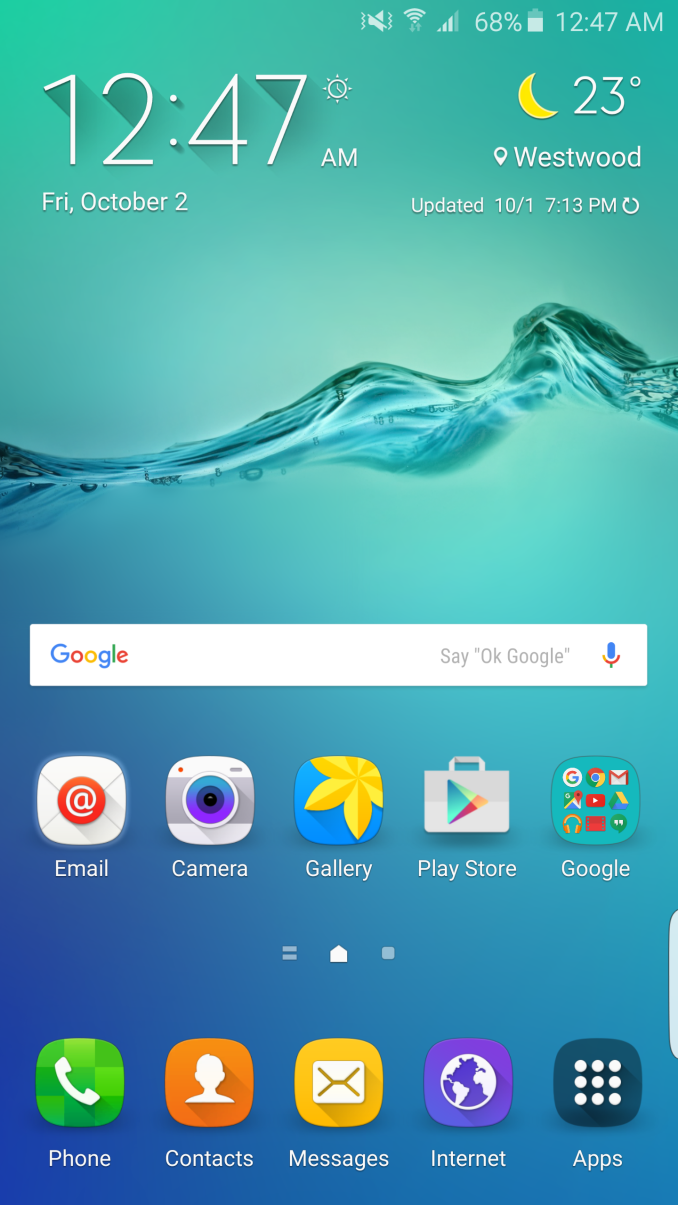
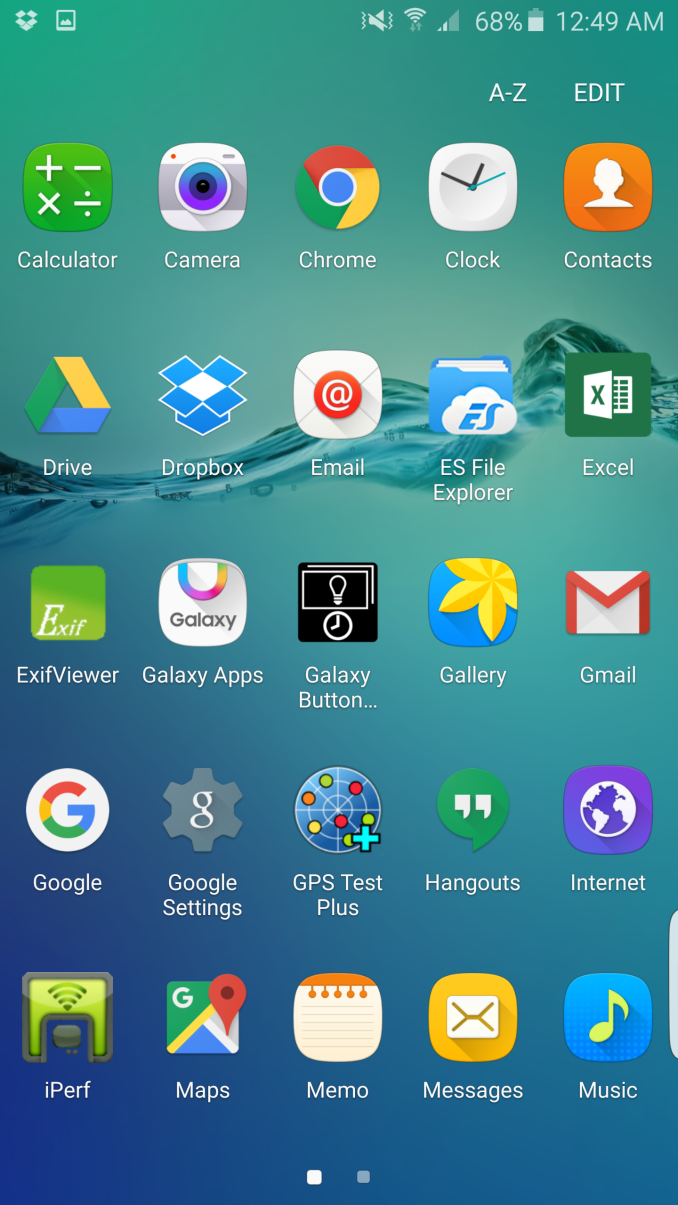



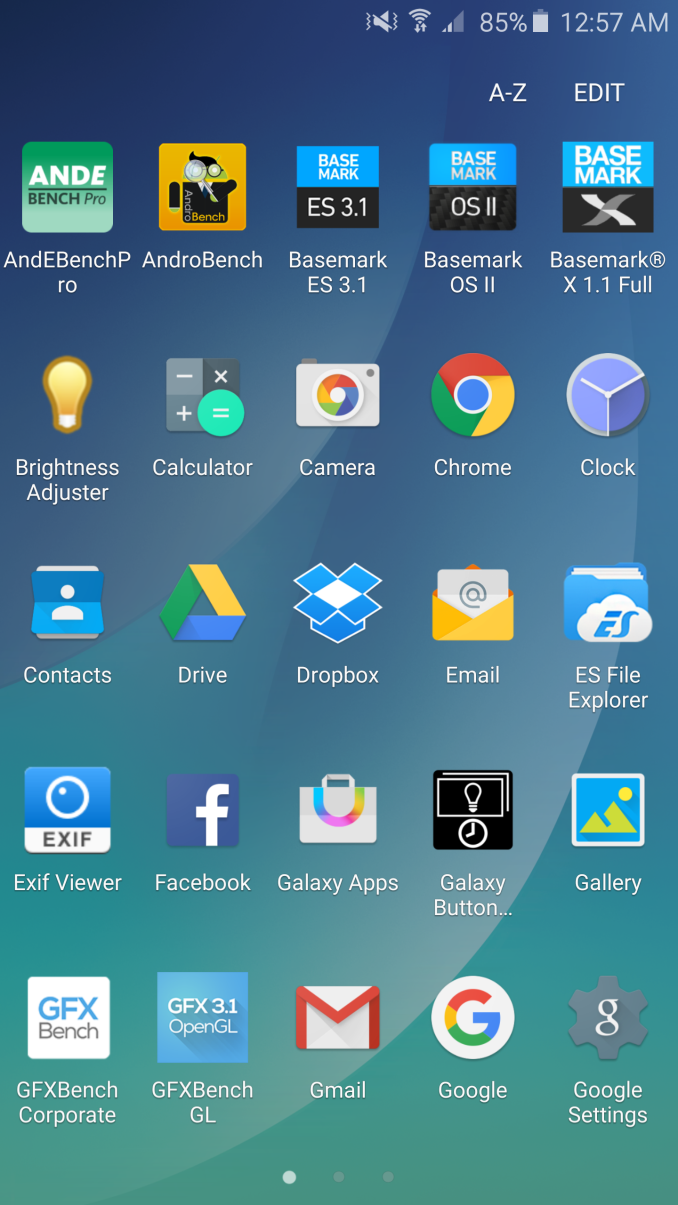
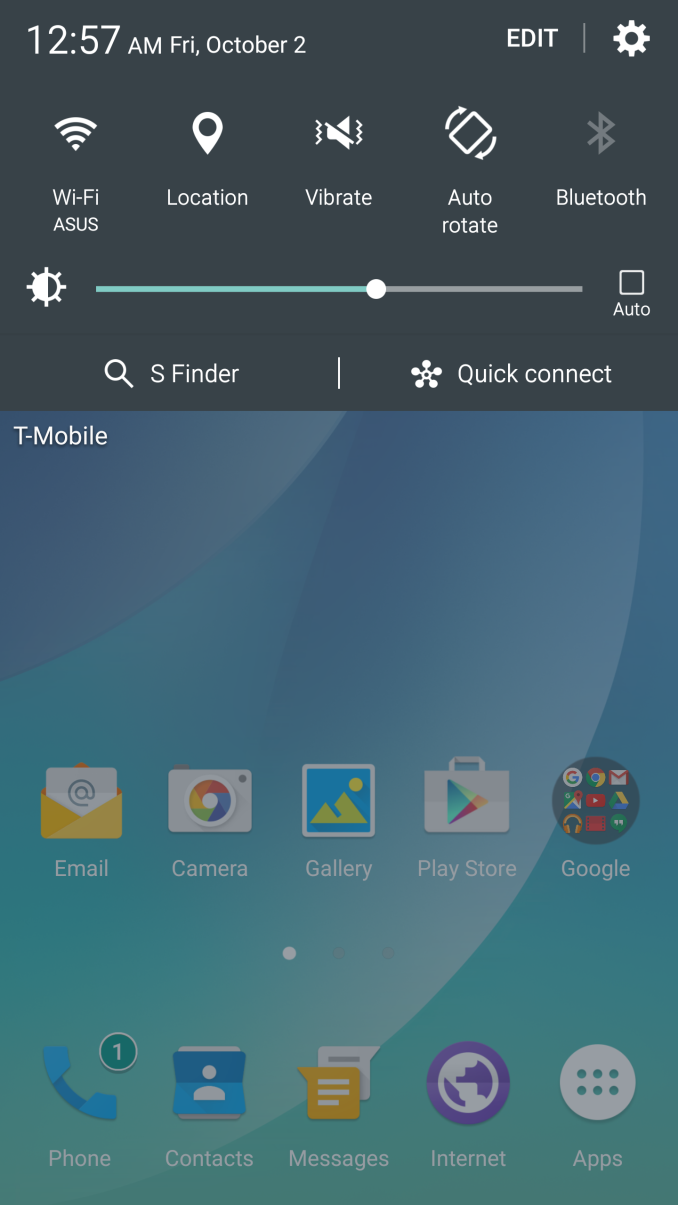
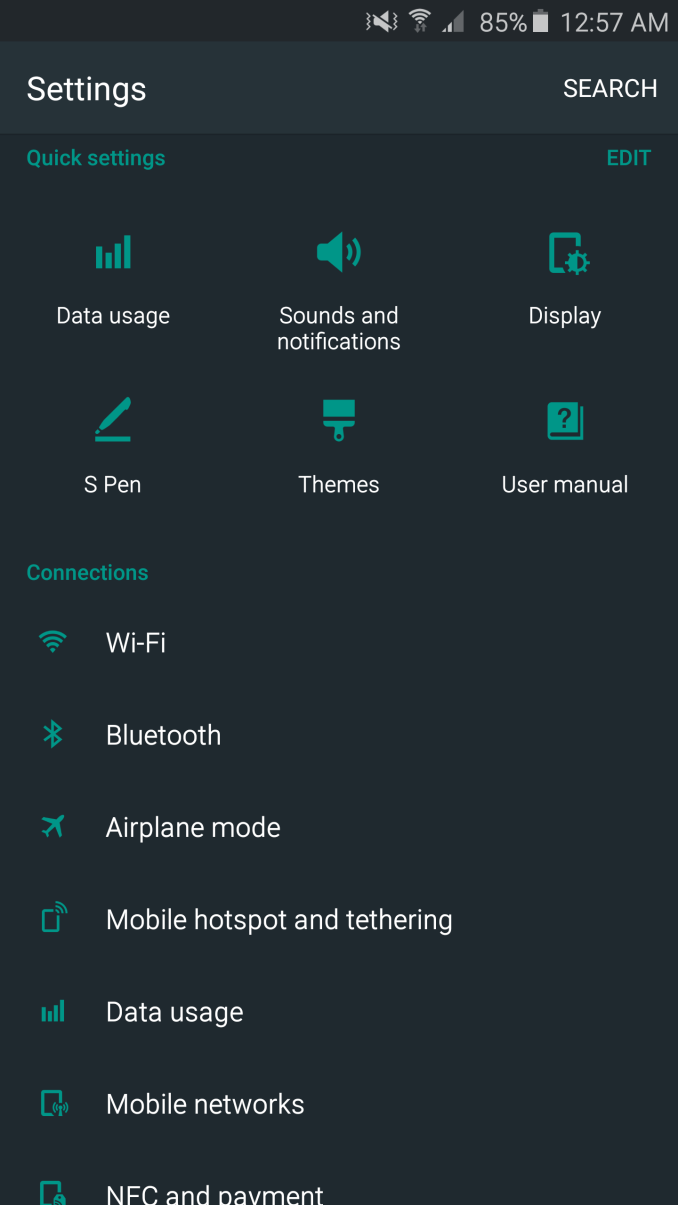
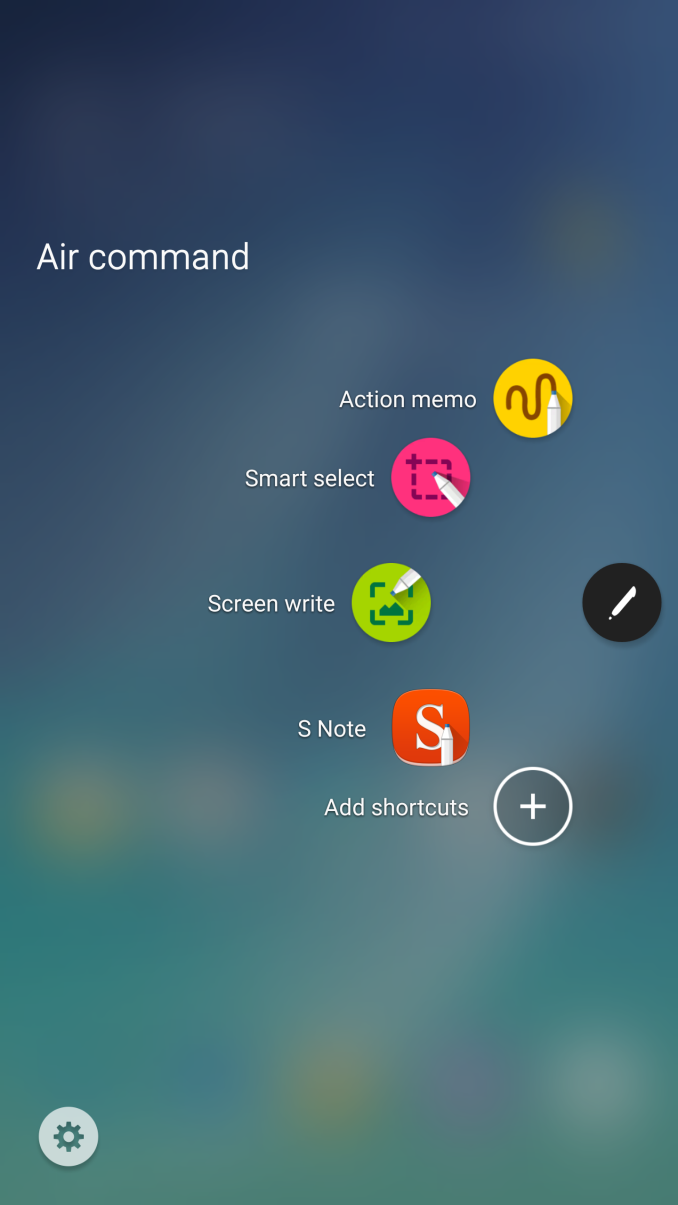

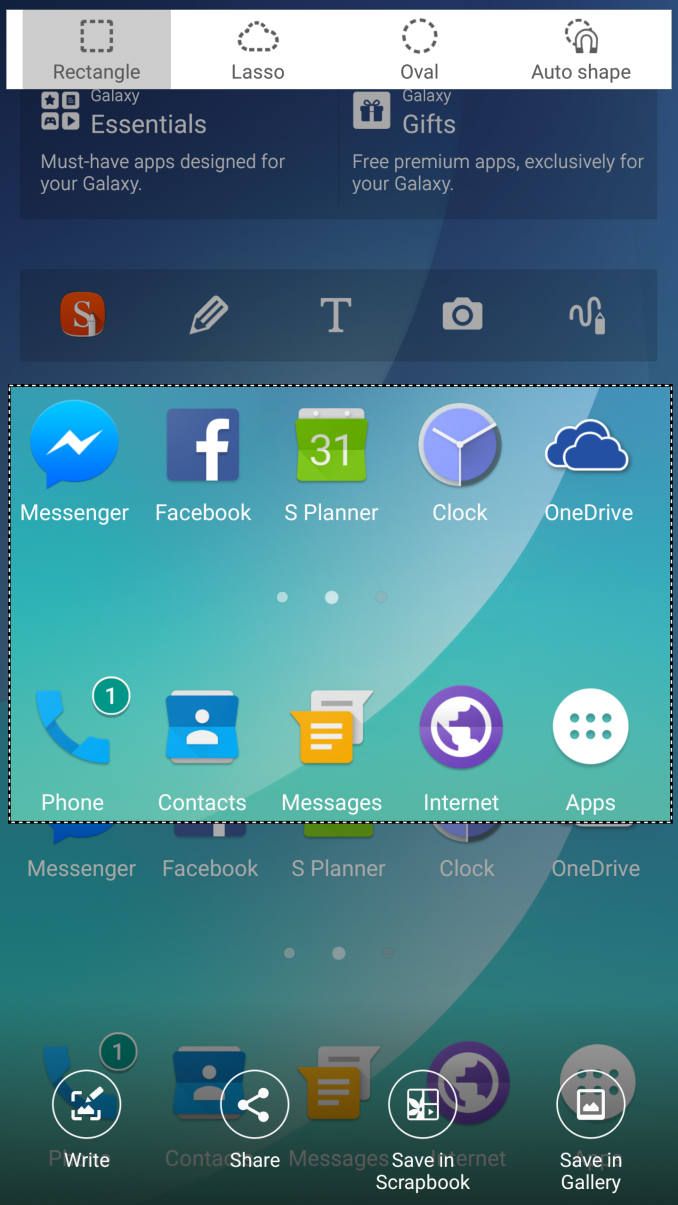
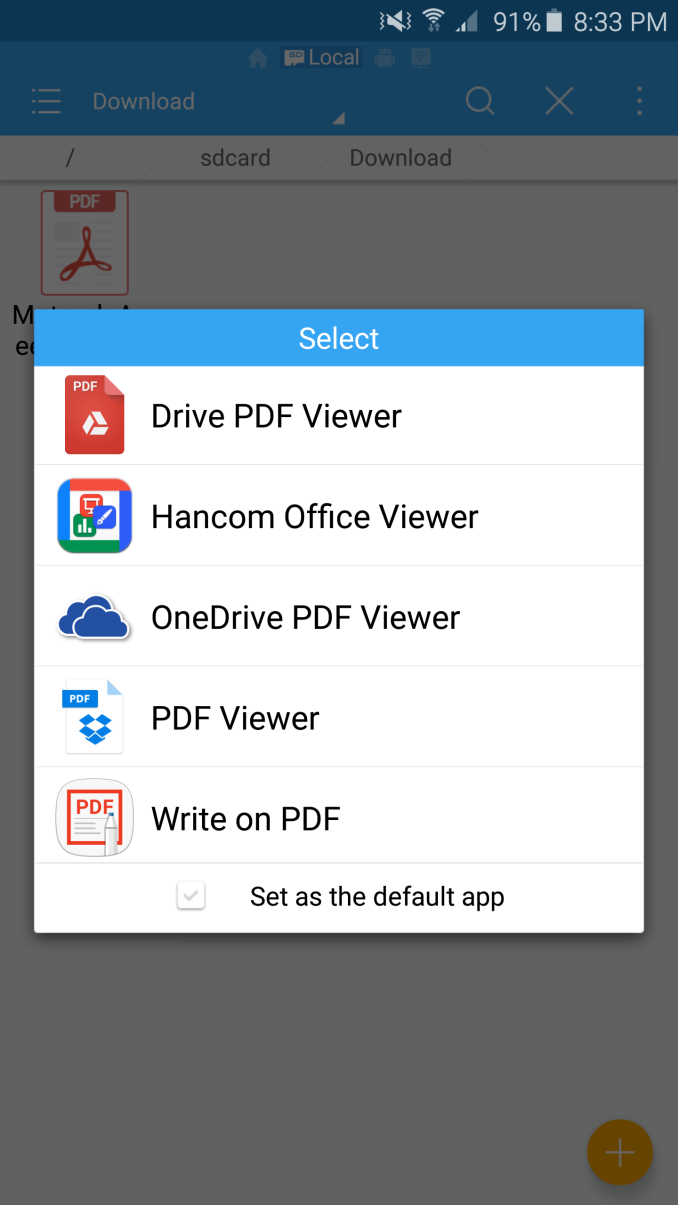
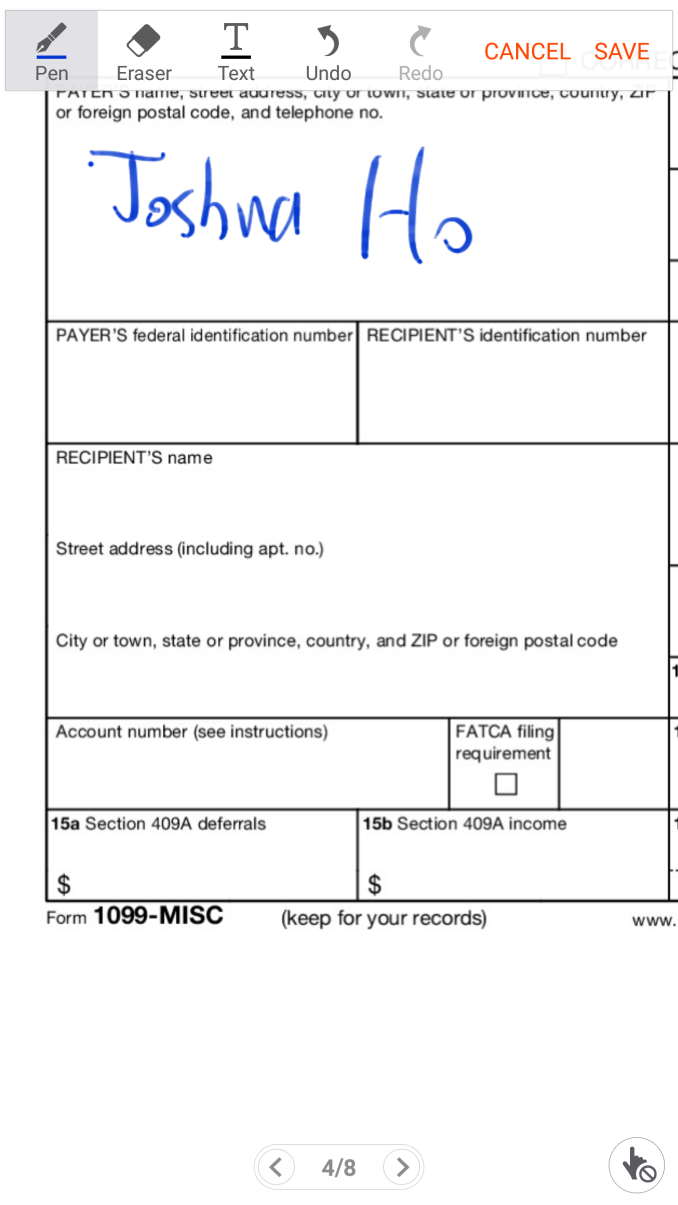

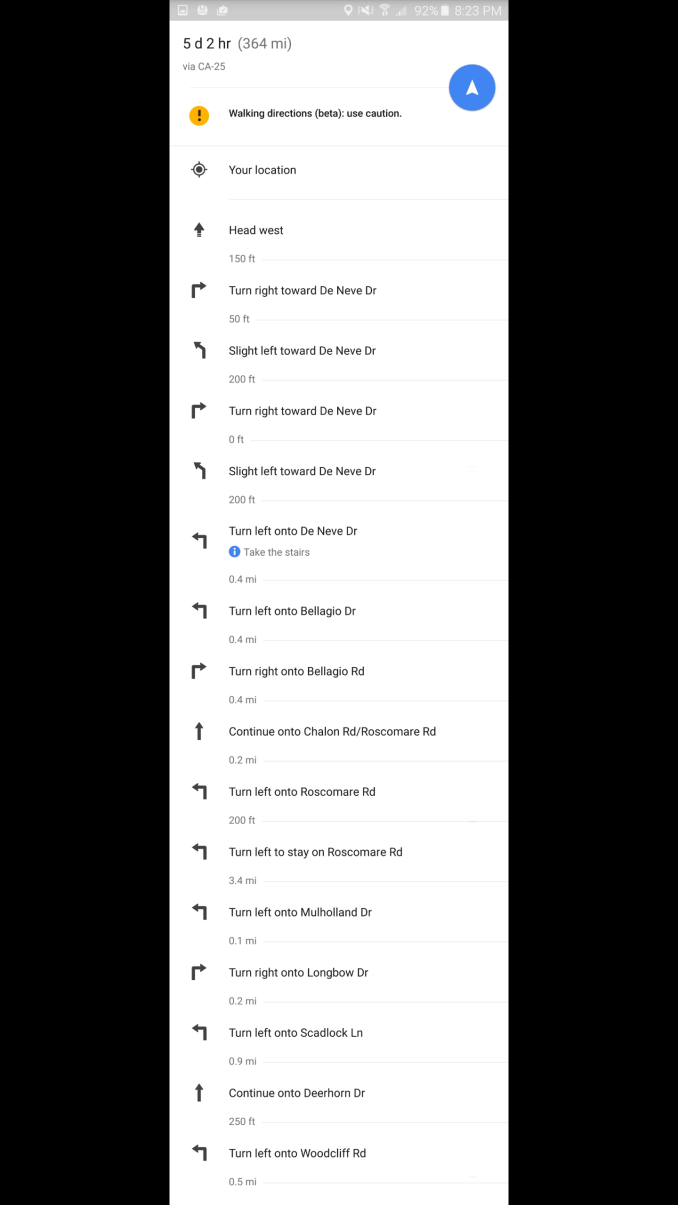
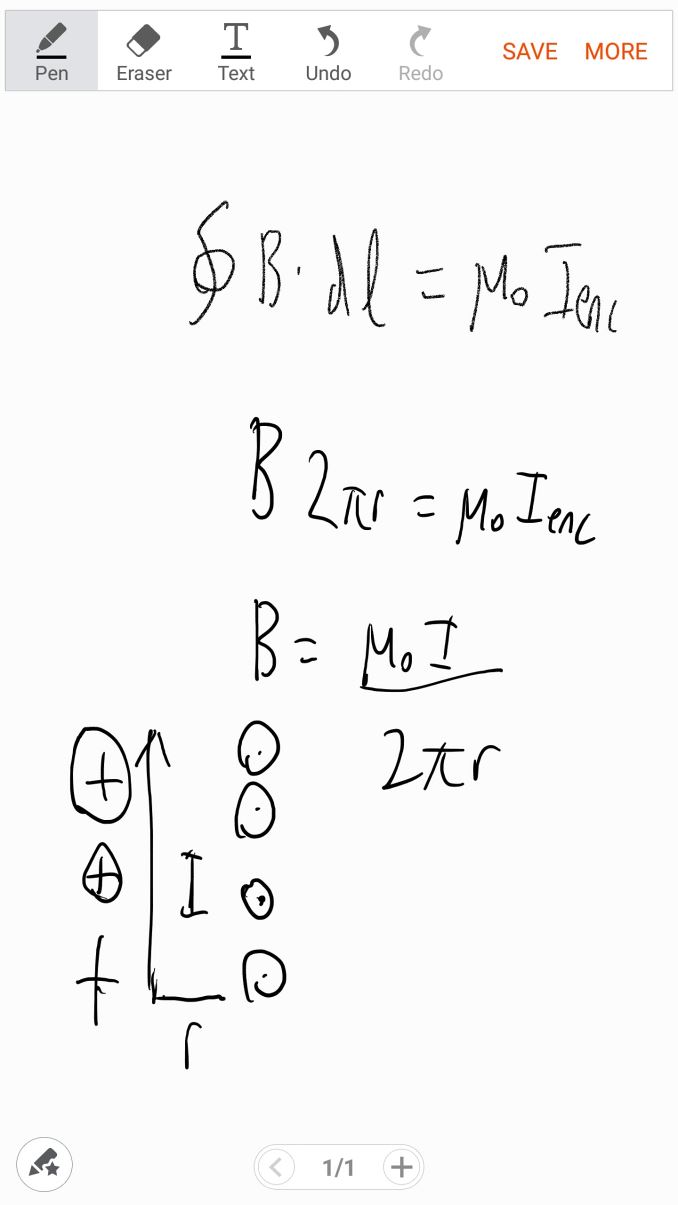
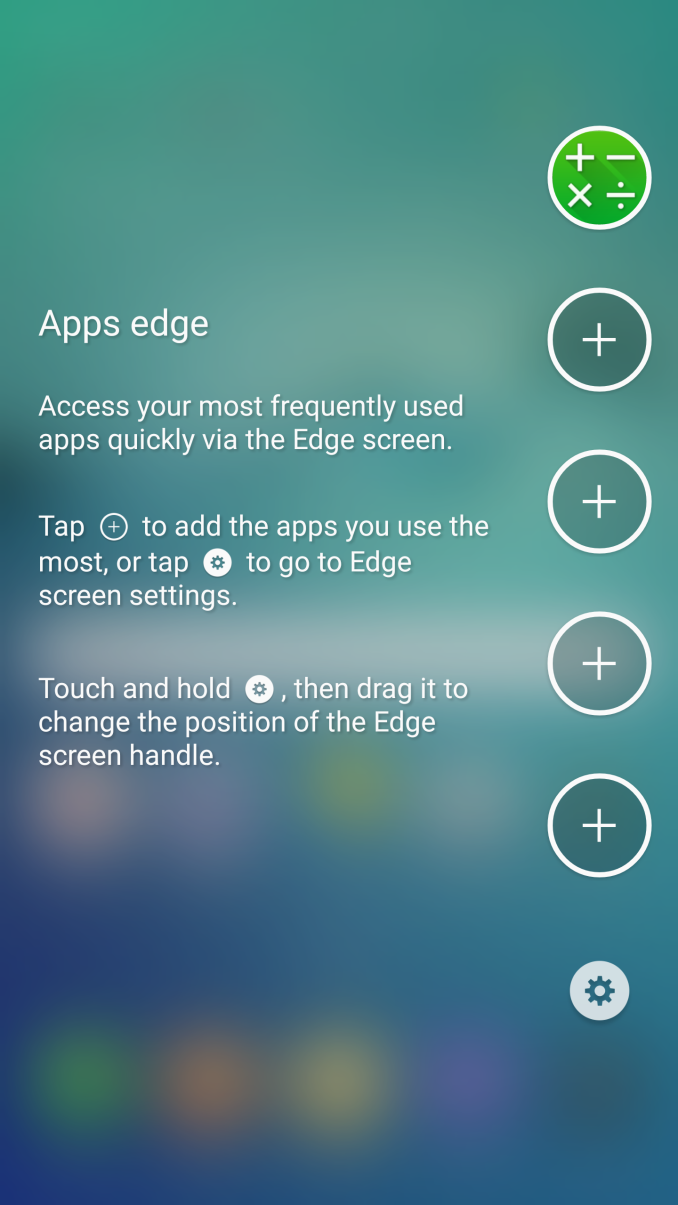


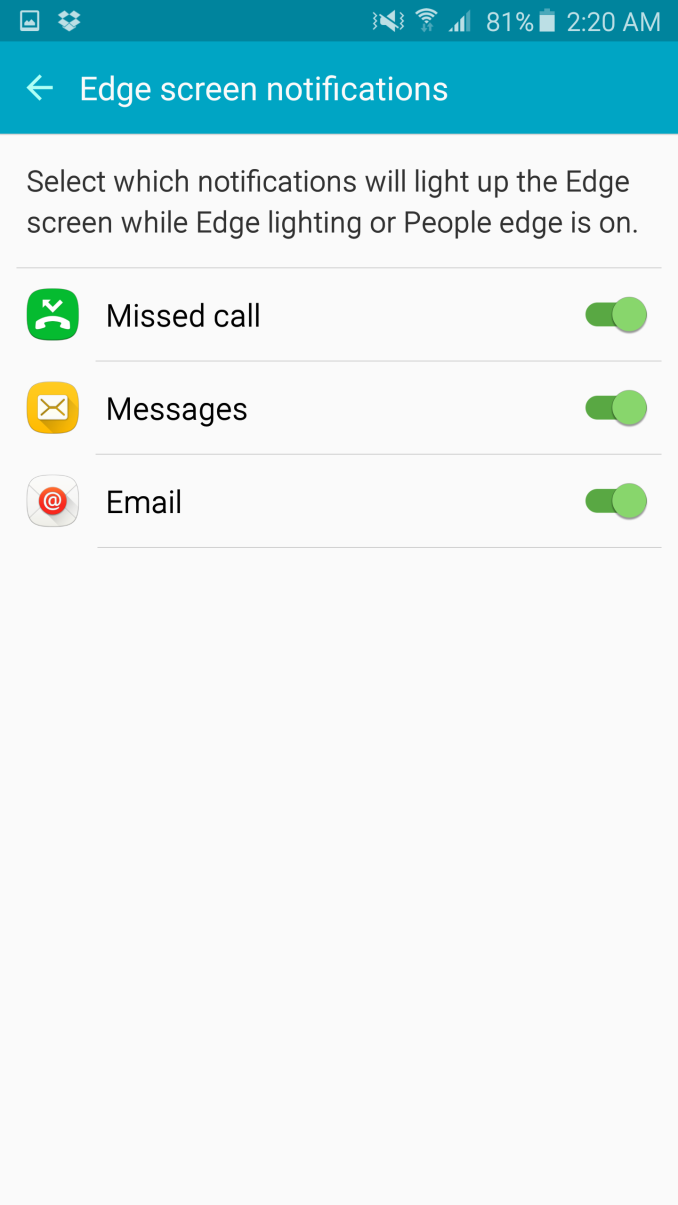








225 Comments
View All Comments
melgross - Saturday, October 3, 2015 - link
I'm not convinced that the 8/4 solution is a good one. Four weak cores, and four even weaker cores may look good in multiprocessing tests, but in the real world, it's going to lag.mercucu1111 - Friday, October 2, 2015 - link
Exynos 7420 Full load Geekbench : 5600A9 Full load Geekbench : 4400
So E7420 CPU is 30% higher.
According to GFX 3.0 and 2.7
A9 GPU is 40% higher.
So Nobody can say which is better lol
melgross - Saturday, October 3, 2015 - link
The multiprocessing tests mean little though. They're often questioned. The problem is that real world use doesn't function that way.darwinosx - Friday, October 2, 2015 - link
Heh. Kids. Apple sales have destroyed Samsung as is well known.Kuzi - Friday, October 2, 2015 - link
As of Q2 2015, Samsung has 21.4% of the Smarphone market, Apple has 13.9%:http://www.idc.com/prodserv/smartphone-market-shar...
Well known yeah right.
tipoo - Friday, October 2, 2015 - link
Is that 21% high end phones like the GS6, or all the cheap phones with razor margins they also have?hughlle - Friday, October 2, 2015 - link
Irrelevant to the statement darwinosx made.. he stated Apple sales have destroyed Samsung's sales. Clearly they havnt. The type of phones Mali g up the figures is irrelevant to that statement.lukarak - Friday, October 2, 2015 - link
Well, if you mention sales, you know, exchange of stuff for money, then money made is much much more important than unit numbers to judge someones performance. Because, they do sales to earn money, not to ship units. And Apple destroys Samsung in that regard.Kuzi - Friday, October 2, 2015 - link
Remember that since the first iPhone till now most of the SOCs used were made by Samsung. Also Samsung supplied RAM, screens, flash etc for the iPhones and iPads. The IPhone 6 SOC and RAM is supplied by samsung. So for every iPhone/IPad sold, Samsung makes money. It has been thisnway since the first IPhone, enjoy.Morawka - Friday, October 2, 2015 - link
yay apple makes more money, but samsung sells more phones.. hmm interesting. i would say android wins because they make it all up on app sales and profits